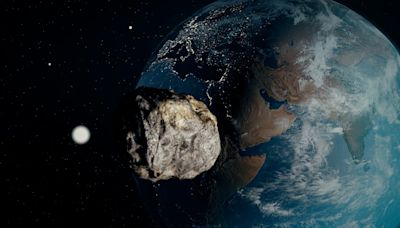Search results
People also ask
When does a full moon appear highest?
When does a new moon appear highest?
How does the Moon make Earth a more livable planet?
What do we know about the Moon?
The best times to see a daytime Moon are perhaps during the first and last quarter phases, when the Moon is high enough above the horizon and at about 90 degrees from the Sun in the sky. This helps make the Sun’s reflected light bright enough to see as it reflects off of the Moon.
- All About the Moon | NASA Space Place – NASA Science for Kids
Quick Facts: Earth has just one moon – a rocky, cratered...
- Moon Facts - Science@NASA
The brightest and largest object in our night sky, the Moon...
- All About the Moon | NASA Space Place – NASA Science for Kids
The Moon is the brightest celestial object in Earth's night sky. This is mainly due to its large angular diameter, while the reflectance of the lunar surface is comparable to that of asphalt. The apparent size is nearly the same as that of the Sun, allowing it to cover the Sun completely during a total solar eclipse.
A new moon appears highest at the summer solstice and lowest at the winter solstice. A first-quarter moon appears highest at the spring equinox and lowest at the autumn equinox. A full moon appears highest at the winter solstice and lowest at the summer solstice.
- Why Does It Look Like The Moon Is Changing Shape?
- Is There Actually A “Dark Side" of The Moon?
- How Did The Moon form?
- How Do We Study The Moon?
- What Do We Know About The Moon?
From Earth, it might look like the Moon is changing shapeeach night – from a tiny sliver to a half moon to a full moon and back again. What’s actually happening is that from our spot on Earth, we see different parts of the Moon lit up by the Sun as the Moon travels in its orbit.
No. The Moon rotates on its own axis at the same rate that it orbits around Earth. That means we always see the same side of the Moon from our position on Earth. The side we don't see gets just as much light, so a more accurate name for that part of the Moon is the "far side."
Scientists believe that the Moon formed early in the solar system’s history after Earth and an object about the size of Mars smashed into each other. The impact sent chunks of Earth and the impactor into space that were pulled together by gravity, creating the Moon.
Even thousands of years ago, humans drew pictures to track the changes of the Moon. Later, people used their observations of the Moon to create calendars. Today, we study the Moon using telescopes and spacecraft. For example, NASA's Lunar Reconnaissance Orbiter has been circling the Moon and sending back measurements since 2009. The Moon is the onl...
Today, we know that the Moon is covered by cratersas well as dust and debris from comets, asteroids and meteoroid impacts. We know that the Moon’s dark areas, called maria – which is Latin for seas – are not actually seas. Instead, they are craters that lava seeped into billions of years ago. We know that the Moon has almost no atmosphere and only ...
NASA's interactive map for observing the Moon each day of the year.
The brightest and largest object in our night sky, the Moon makes Earth a more livable planet by moderating our home planet's wobble on its axis, leading to a relatively stable climate. It also causes tides, creating a rhythm that has guided humans for thousands of years. 10 things.
May 23, 2023 · The moon is Earth's most constant companion and the easiest celestial object to find in the night sky. The rhythm of the phases of the moon has guided humanity for...



